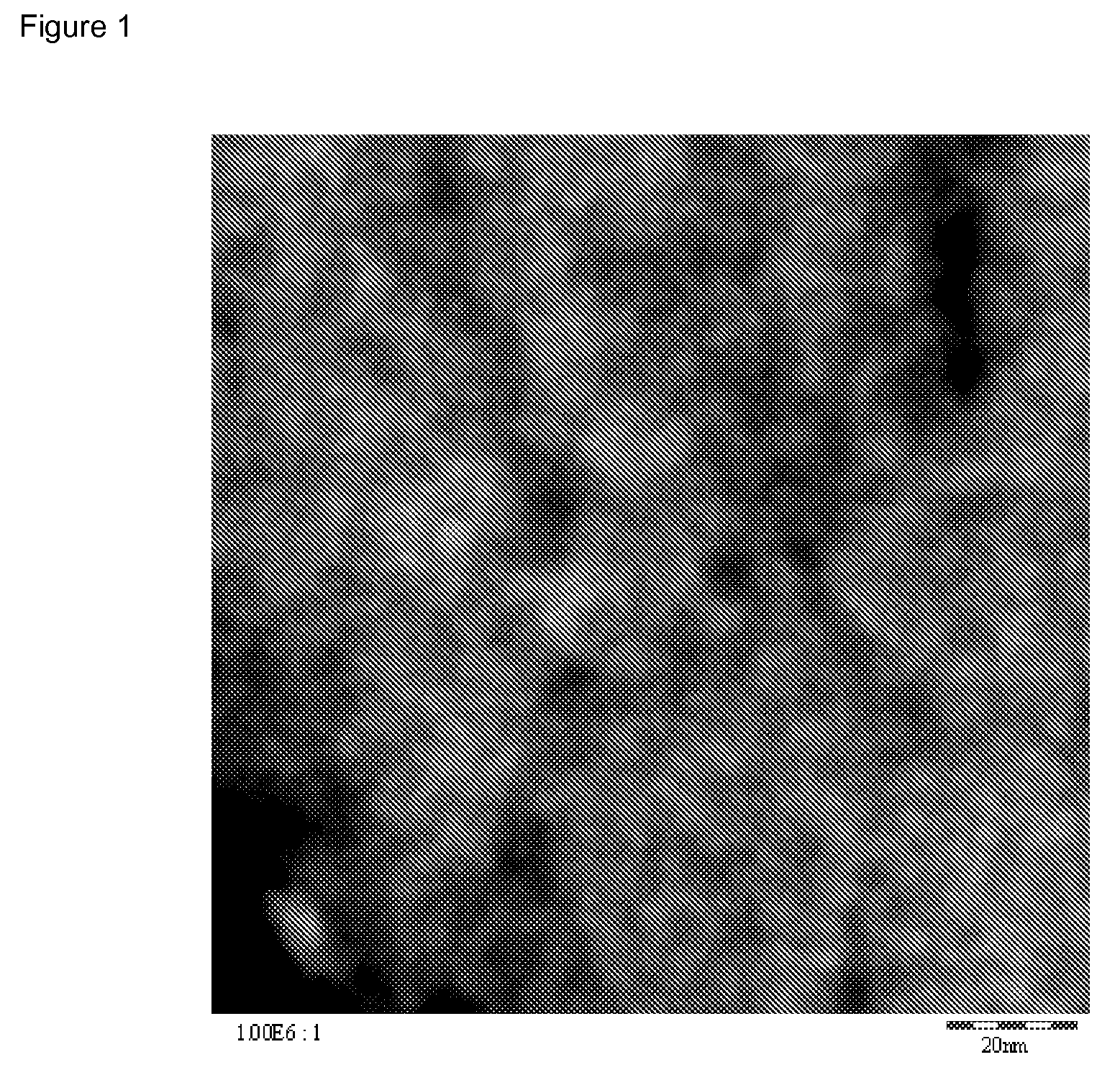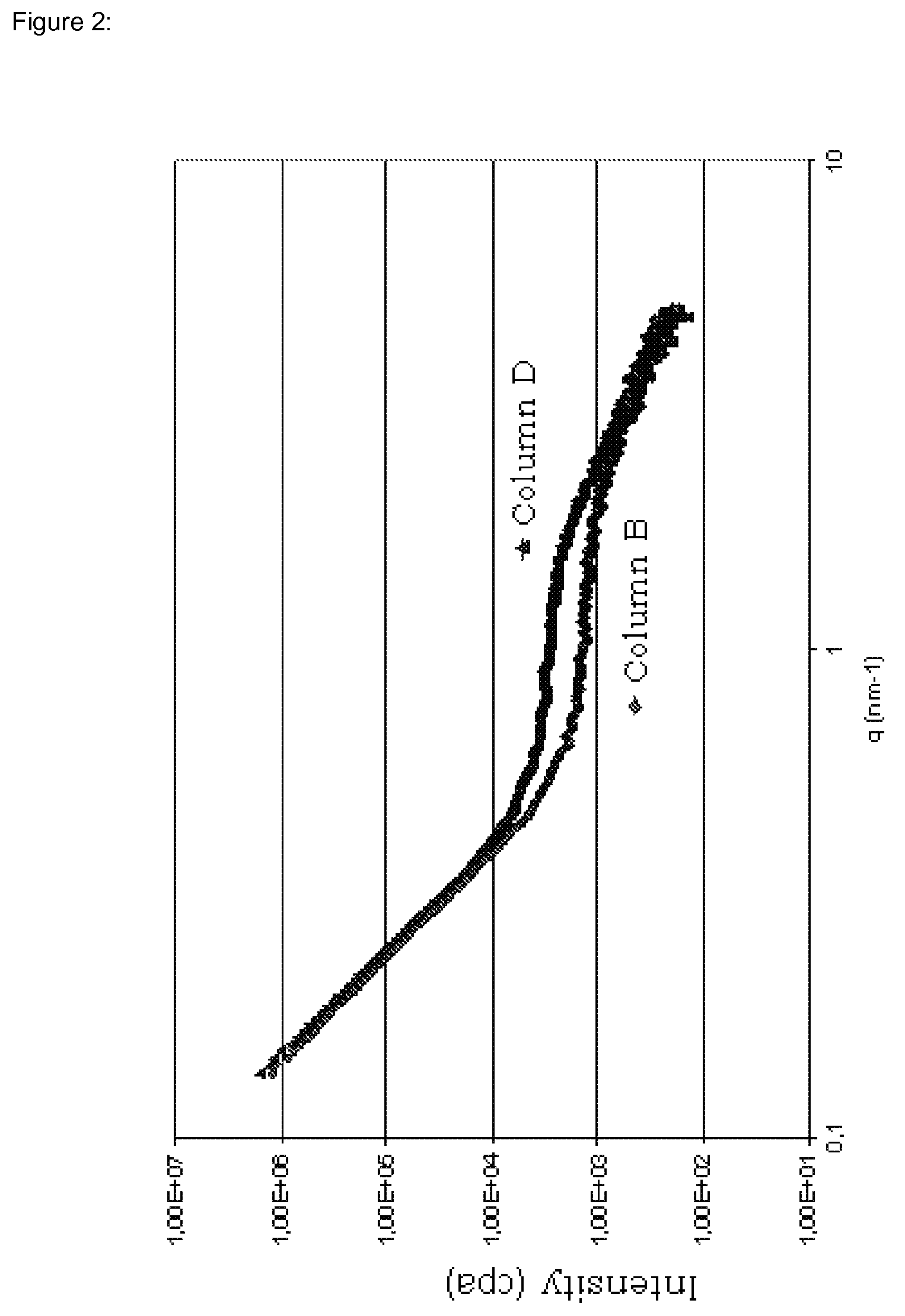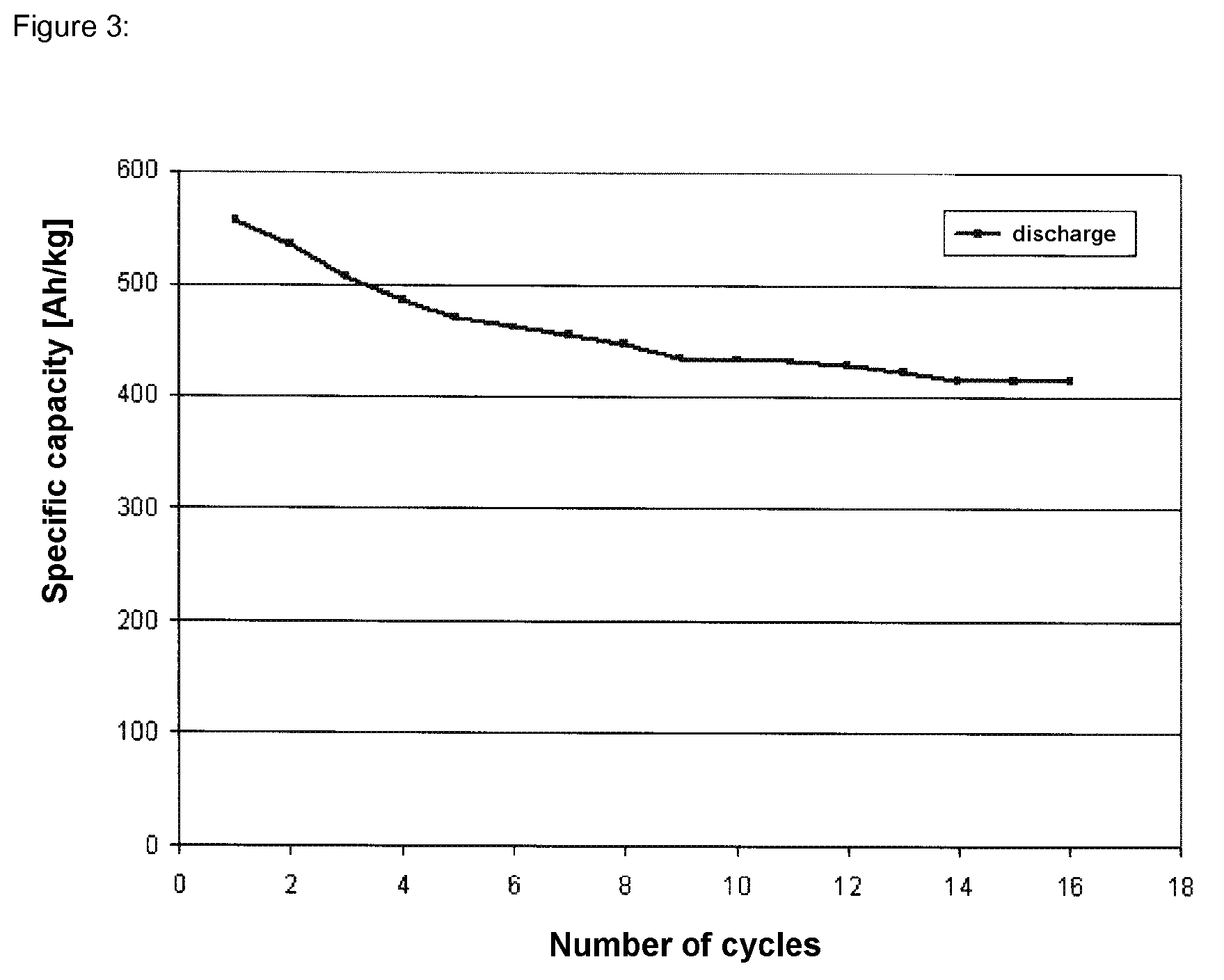Electroactive material, and use thereof in anodes for lithium-ion cells
a technology of anode material and electroactive material, which is applied in the direction of non-metal conductors, cell components, conductors, etc., can solve the problems of low specific capacity, unfavorable use of anode material, etc., and achieve the effect of economic production
- Summary
- Abstract
- Description
- Claims
- Application Information
AI Technical Summary
Benefits of technology
Problems solved by technology
Method used
Image
Examples
example 1
Production of the Electroactive Material
[0173]1) 65 g of 2,2′-spirobi[4H-1,3,2-benzodioxasilin] were dissolved in 500 ml of trichloromethane. The reaction vessel was made inert by means of nitrogen and the polymerization was started by addition of 5 g of methanesulfonic acid at 23° C. The reaction mixture was allowed to react for a further one hour at 23° C. and the polymer was filtered off. The polymer obtained in this way was dried to constant weight at 50° C. in a vacuum drying oven.[0174]2) The powder obtained in step 1 was subsequently calcined at 600° C. in a stream of nitrogen for 2 hours in a tube furnace. This gave a black powder.
[0175]According to elemental analysis, the powder had a carbon content of 56.1% by weight and a silicon content of 15.4% by weight.
[0176]According to ESCA, the silicon was present essentially as silicon dioxide (signal at 103.3 eV). The carbon was present essentially as graphite (asymmetric signal at 284.5 eV).
[0177]According to SWAXS, the average ...
example 2
Production of the Electroactive Material
[0179]The powder obtained in step 1 was subsequently calcined at 800° C. in a stream of nitrogen for 2 hours in a tube furnace. This gave a black powder.
[0180]According to elemental analysis, the powder had a carbon content of 55.9% by weight and a silicon content of 16.6% by weight.
[0181]According to ESCA, the silicon was present essentially as silicon dioxide. The carbon was present essentially as graphite.
[0182]According to SWAXS, the average spacing of the phases was less than 1 nm.
example 3
Production of the Electroactive Material
[0183]The powder obtained in step 1 was subsequently calcined at 1000° C. in a stream of argon for 2 hours in a tube furnace. This gave a black powder.
[0184]According to elemental analysis, the powder had a carbon content of 60.5% by weight and a silicon content of 16.3% by weight.
PUM
| Property | Measurement | Unit |
|---|---|---|
| average distance | aaaaa | aaaaa |
| molar ratio | aaaaa | aaaaa |
| temperature | aaaaa | aaaaa |
Abstract
Description
Claims
Application Information
 Login to View More
Login to View More - R&D
- Intellectual Property
- Life Sciences
- Materials
- Tech Scout
- Unparalleled Data Quality
- Higher Quality Content
- 60% Fewer Hallucinations
Browse by: Latest US Patents, China's latest patents, Technical Efficacy Thesaurus, Application Domain, Technology Topic, Popular Technical Reports.
© 2025 PatSnap. All rights reserved.Legal|Privacy policy|Modern Slavery Act Transparency Statement|Sitemap|About US| Contact US: help@patsnap.com



